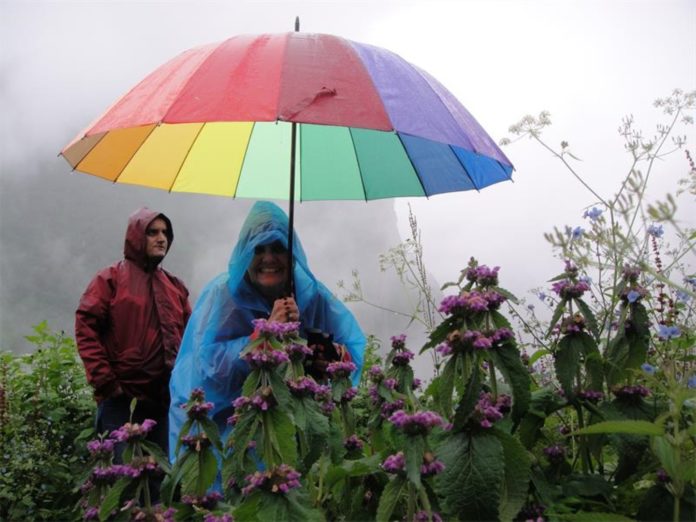With an adventurous spirit and passion for travel, 78-year-old Di Higginson Keath is packing her bags for another epic trip, this time it’s for the little Yemeni island Socotra. She chats to Bronwyn Forbes-Hardinge about her itchy feet that have led her to places less travelled around the globe.
With an educational and work history in food sciences, and her close association with the Durban Botanic Gardens for many years, it’s not surprising that Di’s home is a library of Veld and Flora and National Geographic magazines, and decorated with treasures from her travels.
‘Traveling is food for the soul. It’s not simply something that I enjoy doing, but it is something that has become a part of me. It’s like an itch that I constantly need to scratch! My late husband and I used to travel a fair amount, but after the 90s, I began to dedicate every year to at least one travel, sometimes two. I’ve been to seven different countries and to several states, and I steer clear of the resorts and upmarket adventures. I’ve got a hankering for roughing it a little, uncovering the hidden secrets within places that are far less travelled.’

When asked about her travels, Di shares, with huge delight, her tales of places like Ethiopia’s Danakil Depression – a vast, tortured, desert plain known for its sulphur springs, volcanoes, geysers, acidic pools, vast salt pans, and colourful mineral-laden lakes. She gushes about Kanyakumari beach, on the southern tip of the Indian peninsula, known for sunsets and moonrises; and with great enthusiasm, talks about how she climbed the soaring peak of Mount Kinabalu, the capital of Borneo, to glance at the largest flower in the world.

‘Danakil lies about 125m below sea level, and is one of the hottest and most inhospitable places in the world. For centuries, locals have been trekking in with camel caravans to mine the salt by hand, and they now guide tourists into this alien-looking landscape. It’s a trip that really taught me the value of wet wipes. As hot as it was, it was an incredible place to behold, and sleeping out in the open, under the stars, was a spectacular experience. The Galapagos Islands, an isolated set of shield volcanoes and lava plateaus located west of Ecuador, is another bucket-list destination for travellers alike, and for good reason. Between 700 000 and 4.2 million years of age, it is a double World Heritage site (both the land and sea are protected) and it served as the inspiration for Charles Darwin’s Theory of Evolution.’
Another extraordinary encounter Di enjoyed in Ethiopia was with a troop of Gelada monkeys during a walk up the Semien Mountains.
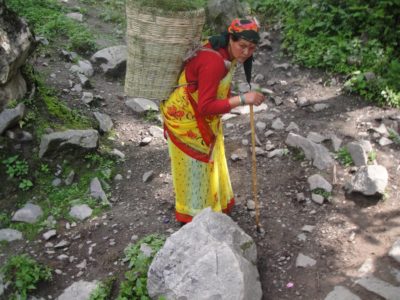
‘Also known as the bleeding-heart monkey, they are endemic to the Ethiopian Highlands. It is something else to be privy to their unearthly screeching as they vault onto the plateau like an army of furry circus performers once they’ve awoken from their nightly cliff-side slumbers.’
‘Oh how I love the Middle East! Mostly for its history, what with destinations like Turkey, Lebanon, Malaysia, Singapore, Greece and The Americas, all of which are just beautiful to explore. Muscat, the largest city of Oman, is arguably the Gulf’s most characterful capital. Scenically wedged between mountains and ocean, with old forts and excellent museums, an opera house and flower-filled parks, it’s a delight to visit.’
Food, people, beauty, culture and stress relief are some of the biggest reasons why Di seeks travel. She loves to walk, learn, gather knowledge and experience, and then share it with others. This is something she does regularly following her returns, through special talks she does via the Botanical Society and other local associations.
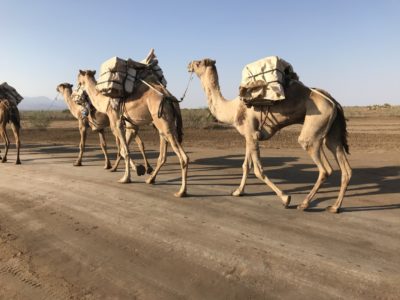
‘I love walking and I love plants in the rawness of their natural environments. I get out a lot, I go plant hunting with the Custodians of Rare and Endangered Wildflowers, and we venture into plenty of grasslands. I also do Pilates to keep fit, but I think that the walking I do keeps me in the shape that I am which allows me to continue walking up hills and mountains. People don’t do this enough. In fact, people don’t know what they’re missing by not walking hills and valleys, I don’t mean only during travels.’
Di’s climbed the soaring peak of Mount Kinabalu, the capital of Sabah, Borneo that, at 4093 metres, is the highest in South East Asia and home to the largest flower in the world, the Rafflesia keithii. Every few years, for a couple of days only, and exclusively to this region, it blooms up to a whopping 94cm in diameter.
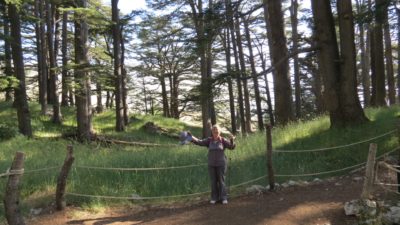
‘To climb to the peak is an unforgettable adventure. Two days of hard trekking with a night en route, but the reward of seeing dawn break from the summit is well worth the aching muscles, which can be eased in the hot springs at Poring.”
‘We climbed Ladakh in Northern India, which, at 17000ft above sea level, has one of the highest passes in the world.
She’s also scaled the foothills of Himalayas on a quest to see the elusive Blue Poppy. Native to the area, it only blooms briefly.
At the time of our trip, India was hit with terrible monsoons, so of course we were caught in a landslide. Exhausted, drenched by the torrential rain and, with legs like lead, we pushed along a narrow, vertiginous trail high above a forest of pine and rhododendron. We managed to see the poppy thankfully, but finding our way back down the mountain, on the backs of mules that were sliding basically down the rock paths, was treacherous.’
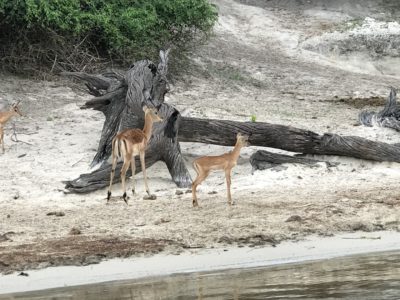
Given that these are not the kinds of travels that simply call for a cozzie and a few changes of clothing, Di says that the preparation and the packing are important rituals that she takes her time with.
‘I always do my homework. It’s such an essential part of travelling – things like buying books to read about places I’m am planning to visit, making notes, learning the ropes, knowing what not to do or what is expected in places that I am not familiar with. It is important to know what you are capable of, what your travels will take out of you, and what your limits are. I’ve faced some scary stuff. Even something like acclimatisation to altitude can pose a challenge that requires some serious mental stamina.’
‘And as much as some people like to go it alone, travel is always better with a partner or in a group. I have a lovely travel friend named Jocelyn Sutherland, who shares similar interests and the same passion for travel as I have. We’ve actually just recently returned from Botswana, where we crossed the Chobe River to the Namibian border to board a houseboat.’
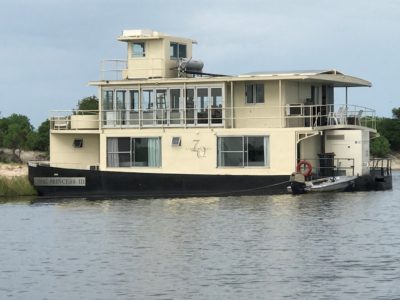
Without clothes for a while because her suitcase was stuck at the airport, the two boarded the Chobe Princess houseboat along with four other guests, and enjoyed a marvellous three-night stay during which they were spoilt by attentive Namibian crew who made haute cuisine meals and took them on game viewing excursions in smaller flat-bottomed boats.
‘Fortunately for me – and again this is why I highlight the need for a travel partner – Jocelyn had her suitcase in the flight cabin, so she was not without, and generously shared her clothes. We saw loads of wildlife and the birdlife, particularly the water birds, were in great numbers. Great caution was taken to evade the pods of hippos which seemed to have property rights to large areas of the river. Each night we had a different mooring and change of scenery but always a new family of hippos popping up and yawning at us, and the cry of the fish eagle and the memory of the animals under the big sky have stayed with us long after disembarking and returning home.’
Because Di and Jocelyn have travelled so often to India, they’ve made great acquaintances with the travel agent through whom they always book. With a bird and nature-loving disposition, and a vast knowledge of the country, he helps them to plan each trip and all the activities that go with it.
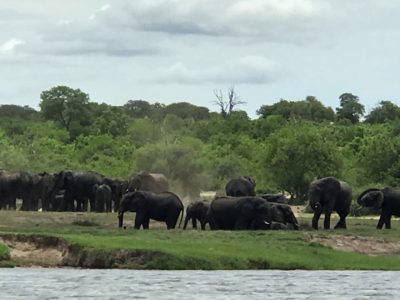
‘We’ve visited Gujarat, India’s westernmost state. With its varied terrain, sacred sites and villages of sand roads, it is a truly impressive place to visit, and well known for its Kutch Embroidery.’
Kutch Embroidery is a signature art tradition of the tribal community of the district, Kutch. Done purely by hand, this art is characterised by a kaleidoscope-like embroiling of bright colours, mirrors, beads and intricate and extensive embroidery that embellishes the entire fabric on which it is based.
‘I also enjoyed a Bengali New year, for the first time, on a mission to immerse myself in the
Sundarbans Reserve Forest located in the south-west of Bangladesh. It is the largest contiguous mangrove forest in the world and an incredible way to get closer to the Mother Nature.’
On Di’s bucket list is the Irrawaddy River – a river that flows from north to south through Myanmar, and one of the largest free-flowing rivers in Southeast Asia. Her life-long dream however, is to get to Socotra in Yemen. The largest of four islands in the Socotra archipelago, it is almost completely sealed off because of the war being battled on the mainland.
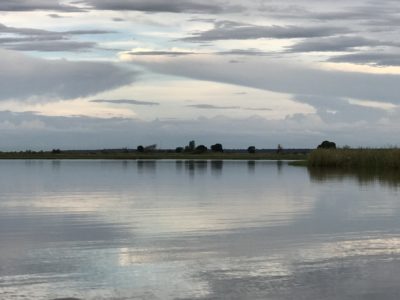
‘The Irrawaddy is a source of hope for the Burmese people, in a country filled with strife. It is where they wash, drink, travel, and pray and I would love to be able to make my way to the border and float down a river that is so sacred to so many. Something is just calling inside me for this trip, but for now, my focus is on my travel nemesis… Socotra. And I am heading there in March!’
Located between the Guardafui Channel and the Arabian Sea, not too far from Aden in Yemen and the coast of Somalia, Socotra has been nearly impossible to reach for the last few years. With a lot of effort and arrangements and some reliable guides (because there are a lot of tour companies offering trips to Socotra who turn out to be a scam) there are a handful who make it that far, but typically, Socotra sees very few tourists in a year. This will be Di’s fifth attempt to enter the area.
‘I’ve tried four times to get there, and every time we get a little closer, but just not close enough. And it’s costly. I am hoping that this trip will be successful. My first attempt was in 2014. Each time plans were aborted because of the political situation in Yemen affecting travel to this small group of islands of which only one is inhabited, Socotra. I board my flight to Cairo on 1 March, after which I will hopefully be able to take that final chartered flight to this elusive Yemeni island.’
What drives her with such passion to visit this island we ask Di?
‘Travelling in general is so good for the soul. I enjoy low-budget travels; taking the tuk tuk instead of a taxi or a hired car. Enjoying life among the locals, without all of the luxurious stuff, that’s my thing. It helps one to learn about and appreciate other cultures. When it comes to Socotra, I’m after the plant spotting – the endemism, high diversity and species that are famous and remarkable both to botanists and amateurs alike. I might be 78, but I haven’t quite got to the knitting stages yet. Albeit a little harder on my body to travel these days, I’m not quite ready to give it up. So, with my backpack, camping gear, camera, visas and lots of luck, this island will be my last big dream-come-true.

